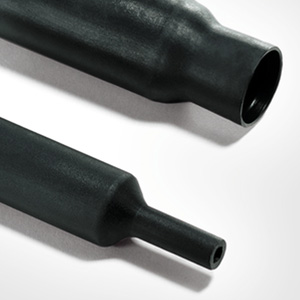 Heat shrink tubing is a versatile and essential component used in various electrical and electronics applications. It serves as a protective and insulating material, offering numerous benefits in terms of durability, safety, and reliability. Here’s a closer look at some of the key applications of heat shrink tubing:
Heat shrink tubing is a versatile and essential component used in various electrical and electronics applications. It serves as a protective and insulating material, offering numerous benefits in terms of durability, safety, and reliability. Here’s a closer look at some of the key applications of heat shrink tubing:
1. Electrical Wire Insulation
- Primary Use: Heat shrink tubing is commonly used to insulate electrical wires and cables. It provides a protective layer around the wire, preventing short circuits, corrosion, and physical damage.
- Why it Works: Once heated, the tubing contracts around the wire, forming a tight, secure seal that ensures optimal insulation and protection.
2. Splice Protection
- Primary Use: Heat shrink tubing is often used to cover wire splices or connections, ensuring that they remain insulated and protected from external elements like moisture and dust.
- Why it Works: The tubing forms a secure, tight fit over the splice area, reducing the chances of accidental exposure, wear, or interference with the electrical signal.
3. Cable Marking and Identification
- Primary Use: Heat shrink tubing can be used to add identification markers to cables, helping to differentiate between wires in complex systems.
- Why it Works: Heat shrink tubing is available in various colors, allowing for easy identification of different cables and preventing confusion during installation, maintenance, or troubleshooting.
4. Environmental Protection (Waterproofing)
- Primary Use: In harsh environments, heat shrink tubing can provide an additional layer of protection to cables, shielding them from moisture, chemicals, and other environmental factors.
- Why it Works: Heat shrink tubing, particularly those with adhesive-lined options, forms a waterproof barrier when heated, making it ideal for applications exposed to outdoor elements or underwater conditions.
5. Automotive and Aerospace Wiring
- Primary Use: Heat shrink tubing is extensively used in automotive and aerospace wiring systems to protect and insulate electrical connections and prevent wear.
- Why it Works: Automotive and aerospace applications often deal with extreme temperatures, vibrations, and physical wear. Heat shrink tubing offers durability, flexibility, and resistance to these conditions, ensuring the longevity of wiring and connections.
6. Stress Relief and Strain Relief
- Primary Use: Heat shrink tubing can be used to provide strain relief at the ends of wires or connectors, preventing the wire from breaking or becoming damaged due to bending or pulling.
- Why it Works: The tubing can be shrunk to tightly fit the wire and connector, offering a cushion against mechanical stress and preventing failure at connection points.
7. Connector Insulation
- Primary Use: In addition to wires, heat shrink tubing is frequently used to insulate connectors and other electrical components, offering protection from short circuits and environmental factors.
- Why it Works: Heat shrink tubing provides an added layer of safety, ensuring that connectors stay isolated and protected from surrounding components or materials.
8. Flexible and Compact Cable Bundling
- Primary Use: Heat shrink tubing is often used to bundle multiple cables together, making them more organized and easier to manage.
- Why it Works: By applying heat shrink tubing over a bundle of cables, it holds them in place while preventing them from tangling or causing friction between individual wires. This makes the cable bundle more flexible and easier to route.
9. Medical Device Wiring
- Primary Use: Heat shrink tubing is used in medical devices, such as pacemakers or medical sensors, to protect sensitive wiring from exposure and external interference.
- Why it Works: Medical devices require high precision, reliability, and protection against environmental contamination. Heat shrink tubing is a safe and effective way to insulate wires and protect the integrity of the device’s electrical components.
10. Electrical Terminations
- Primary Use: Heat shrink tubing is used to terminate wires by covering the exposed ends after the wire has been stripped and prepared for connection.
- Why it Works: The tubing, once shrunk, creates a firm seal around the exposed wire ends, preventing any accidental contact with other conductive surfaces, reducing the risk of short circuits or electrocution.
Conclusion:
Heat shrink tubing is a crucial component in various electrical and electronics applications. Whether it’s providing insulation, protecting against environmental factors, marking cables, or offering strain relief, heat shrink tubing plays an indispensable role in ensuring the safety, functionality, and longevity of electrical systems. With its versatility, ease of application, and wide range of options, heat shrink tubing remains a go-to solution for professionals in the electrical and electronics industries.


